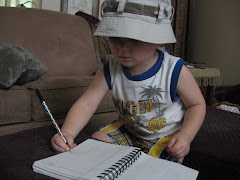Worth, V.
(1994). “All the small poems and
fourteen others. Ill. N. Babbitt. New
York , NY
The National Council of Teachers of English selects a poet
every three years to receive their Award for Excellence in Poetry for Children which
honors a living poet’s lifetime achievement
in poetry for children ages 3 through 13. In 1991, Valerie Worth was the recipient of
this prestigious award.
Her volume of poetry titled “all the small poems and
fourteen more” is 194 pages of one-page poems about topics ranging from frogs
to Christmas lights, from doors to garbage, from frost to potatoes. This volume encompasses 99 poems that were
previously published as four separate volumes, plus 14 additional poems. Each poem is spare, yet full of imagery that
will tickle all five senses such as this one:
garbage
The
stained,
Sour-scented
Bucket tips
out
Hammered-gold
Orange
rind,
Eggshell
ivory,
Garnet
coffee-
Grounds,
pearl
Wand of
bared
Chicken
bone:
Worked back
soon
To still
more
Curious
jewelry
Of chemical
And
molecule.
Critics label this book of poetry as being appropriate for
children ages four through nine.
However, I tried several of the poems – including “garbage” – on my
six-year-old, and he had trouble staying engaged. Many of the images were not ones that he had
experience with, so they didn’t make sense to him. There were a few that caught his attention,
but we had to set this volume aside.
However, I personally love these poems, so I think that
using them with older students would be quite appropriate. Figures of speech abound in these little
treasures – personification, similes, metaphors, onomatopoeia, and sensory
images are generously used, but never overwhelm the poems. These poems would be perfect for teaching
older students about figures of speech and using language precisely and
sparingly to evoke vivid pictures and sounds, smells, tastes, and
feelings.
Read a poem such as “fireworks” to the class, even asking
them to close their eyes and imagine being in this place as they hear the
words.
fireworks
First
A far thud,
Then the
rocket
Climbs the
air,
A dull red
flare,
To hang, a
moment,
Invisible,
before
Its shut
black shell cracks
And claps
against the ears,
Breaks and
billows into bloom,
Spilling
down clear green sparks, gold spears,
Silent
sliding silver waterfalls and stars.
Or read this poem full of tastes and ask the students to
imagine the flavors on their tongues:
sweets
Here
Is a list
Of likely
Words
To taste:
Peppermint,
Cinnamon,
Strawberry,
Licorice,
Lime:
Strange
How they
manage
To flavor
The paper
Page.
Then try mimicking the poem by writing one with smells or
sounds or unusual colors.
Natalie Babbitt, known for her children’s novel Tuck Everlasting, illustrated each poem
with beautiful, realistic, pen and ink drawings that perfectly capture the
words of the poems while still being simple, just like the poems
themselves. I love the art so much, that I love the book for the art as much as the poetry.
These small poems are perfect for novice readers of poems or
those who have been scared off poems by over-zealous English teachers who have
made poetry about analyzing rather than enjoying. The topics of the poems that come from daily
life will feel comfortable and familiar to most readers.



No comments:
Post a Comment